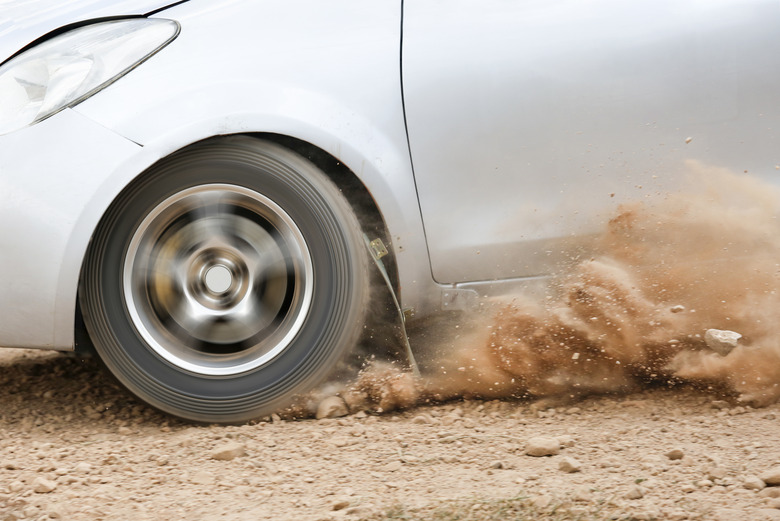List Of The Advantages Of Friction
The first known benefit of friction dates back as much as 500,000 to 1,000,000 years ago, give or take a few millennia, when humans discovered that rubbing two sticks together makes them hot and creates fire. Without the advantages of friction, tires wouldn't roll, and people wouldn't walk. You also wouldn't hear any sound from stringed instruments like cellos, basses or violins, which is created after rubbing a horse-hair bow against the strings of these musical instruments.
TL;DR (Too Long; Didn't Read)
Friction falls into four basic categories: static, sliding, rolling and fluid. All of them represent the force that opposes motion when solid, fluid or gaseous surfaces meet. Friction's advantages include:
* Being able to walk across a surface without slipping. This is static friction.
* Writing on a piece of paper with a pencil or a
pen.
This is
sliding friction.
* Driving a car across the road surface. This is
rolling friction.
* Jumping out of an airplane with a parachute.
This is
fluid friction.
Static Friction Prevents Slipping
Static
Friction Prevents Slipping
Static friction happens when an item rests against or contacts a surface, as in the action of walking across the street or hiking a mountain trail. Without static friction, your feet would slip beneath you like walking on ice, which has little to no static friction. Static friction exerts a force against the soles of your shoes each time they contact the ground to keep you from falling.
Sliding Friction Stops a Car
Sliding
Friction Stops a Car
When you apply the brakes of a car, sliding friction helps to stop it. The brake or disc pad pushes against the inside of the brake drum or against the rotor inside the moving wheel. The surface of the drum or rotor slide against the brake disc or pad, which is a force of friction that slows the vehicle down. The same force applies to the rubber brakes against the sliding motion of a bicycle wheel. Also, the friction between the tip of a pencil allows it to move across the paper as you write, leaving pencil inscriptions known as writing.
Rolling Friction Keeps Vehicles Moving
Rolling
Friction Keeps Vehicles Moving
Rolling friction represents a weaker friction force, which acts on items rolling across the top of something else, like a wheel against a roadway or a ball bearing against the wheel bearing race. Also called rolling resistance or rolling drag, this force resists or pushes against the wheel or bearing as it rolls against a surface. This force keeps the wheel or rollers from slipping against the roadway or race. This allows the roller balls inside a wheel bearing to turn and the wheels on a car or bike to move.
Fluid Friction Makes Parachutes Float and Planes Fly
Fluid
Friction Makes Parachutes Float and Planes Fly
This force applies only to non-solid objects such as air, water and gases. Like all fluids, air has a thickness to it or internal friction also called viscosity. Fluid friction occurs when the air stuck to the wing of a plane rubs against the air layers above it, which helps to keep the plane afloat. This same force works against the inside of a parachute to keep it afloat as a jumper glides to earth.
References
Cite This Article
MLA
Brenner, Laurie. "List Of The Advantages Of Friction" sciencing.com, https://www.sciencing.com/list-advantages-friction-8726478/. 29 April 2018.
APA
Brenner, Laurie. (2018, April 29). List Of The Advantages Of Friction. sciencing.com. Retrieved from https://www.sciencing.com/list-advantages-friction-8726478/
Chicago
Brenner, Laurie. List Of The Advantages Of Friction last modified March 24, 2022. https://www.sciencing.com/list-advantages-friction-8726478/
